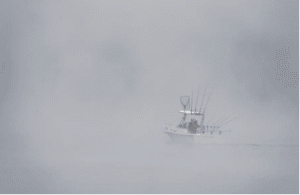Checking the Weather

Understanding weather is a key aspect of boating safety. The operator of a pleasure craft should check the weather forecast before making the decision to head out, to prevent putting the craft or its passengers at risk.
You should also be aware of local factors (such as topography) that may affect the weather. Local people who are familiar with the area can be a good source of information for specific situations. Summer thunderstorms can strike quickly and without warning when you are navigating. Remember to keep an eye on the sky. If the sky starts to look dark and cloudy and conditions are changing rapidly, head for shore.
Marine weather forecasts can be obtained in a number of ways, including from:
- Personal observations;
- Newspapers;
- Marine Radio (VHF);
- Environment Canada;
- Regular am and fm radio weather forecasts;
- Television weather channels.
If you obtain a weather forecast from Environment Canada, be sure that you understand the following terms:
- Light Winds – Are winds that are less than 12 knots (22 km/h).
- Moderate Winds – Are winds that are in the range of 12 to 19 knots (22 to 35 km/h).
- Strong Winds – Are sustained wind speeds in the range of 20 to 33 knots (36 to 61 km/h).
- Small Craft Warnings – Are issued when strong winds (sustained wind speeds in the range of 20 to 33 knots) or waves 3 to 6m are expected.
- Gale Warnings – Are issued when sustained winds of 34 to 47 knots (62 to 86 km/h) are expected.
- Storm Warnings – Are issued when sustained winds in the range of 48 to 63 knots (87 to117 km/h) or waves 9 to 16m are expected.

